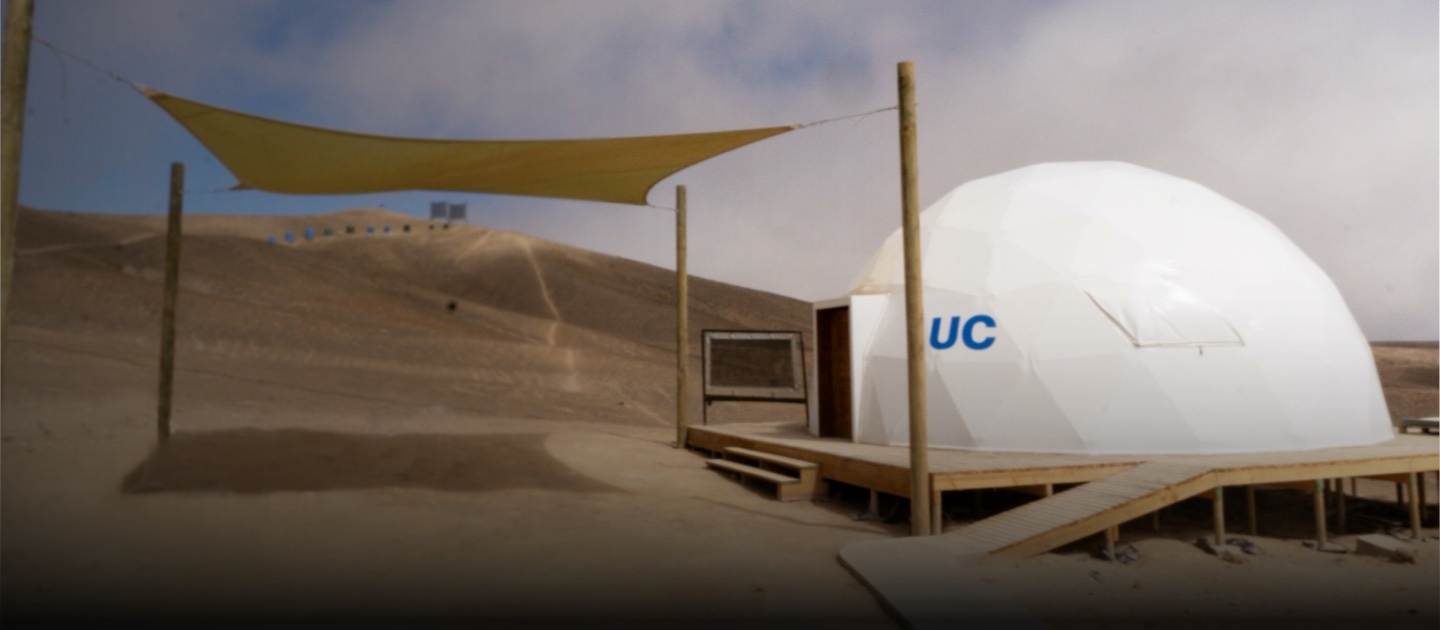
Transforming Fog into Water in the World’s Driest Desert
The Atacama Desert Research Station, inaugurated as part of the Desierto Vivo (Living Desert) project funded by the Public Science program, is a pioneering dome in a lunar-like landscape. This innovative hub in the Tarapacá region, located in the extreme north of Chile, showcases 25 years of research led by UC Chile. Unveiled by UC Chile President Ignacio Sánchez and supported by diverse stakeholders, it stands as a testament to scientific exploration and the dissemination of knowledge.
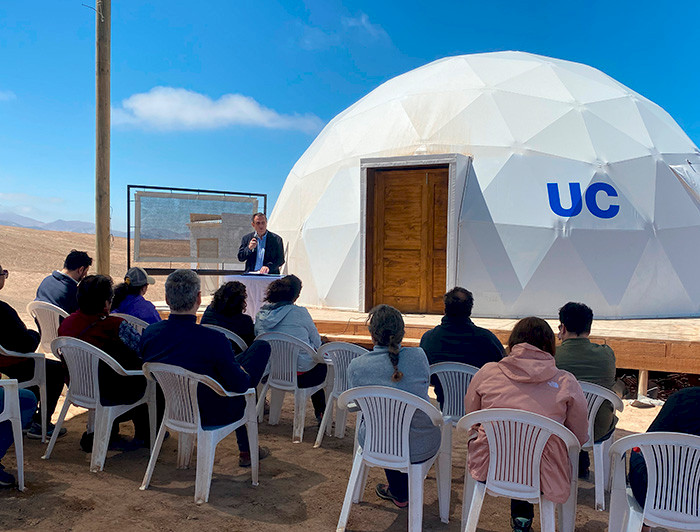
photo_camera "The Living Desert project is about spreading science, valuing water collection through fog catchers, showing what we do to students and youth, but also to the neighborhood councils; establishing links with the community of Alto Hospicio, Iquique, and the different areas of the region," said President Ignacio Sánchez during the inauguration of the Interpretative Center "Desertario" of the Living Desert project. (Photo by: Nicole Saffie)
In minutes, the blue sky transforms as clouds gather, and a hardy wind sweeps across the desolate terrain, swiftly cloaking the fog-catchers atop a hill and removing them from sight. Nestled in the heart of the fog oasis of Alto Patache, 65 km south of Iquique -in the middle of the northern desert of Chile- is the recently inaugurated Interpretive Center "Desertario." The center, situated at the Atacama Desert Research Station, is part of the UC Chile Research Centers and Field Stations - RCER UC (as its Spanish Acronym).
The infrastructure was developed within the framework of "Desierto Vivo: Espacio Público del Agua de Niebla" (Living Desert: Fog Water Public Space), the only project in the Tarapacá Region to be awarded in the call for the 2022 National Public Science Competition for the Development of Regional Public Spaces for the Dissemination and Socialization of Knowledge, of the Ministry of Science, Technology, Knowledge and Innovation.
The facility aims to provide the people from Alto Hospicio, Iquique, and neighboring areas in the Tarapacá region with access to the 25 years of fog water research conducted by UC Chile researchers. Visitors have the opportunity to observe and learn about fog catchers on-site. Within the giant dome is a curated exhibition space equipped with furniture and educational tools. A scale model of a fog catcher is also displayed in the Patio Demostrativo (Demonstration Yard).
The future goal is for communities to have their own fog catchers, contributing to a sustainable and economically viable water source, a crucial aspect in the Atacama Desert, renowned as the driest in the world. Remarkably, while the average daily water consumption in Chile is 200 liters per person, inhabitants of Tarapacá only utilize 118 liters on average. However, a 32-square-meter fog catcher has the potential to generate an average of 220 liters per day, presenting a highly beneficial alternative for the region.
From University Community to Local Community
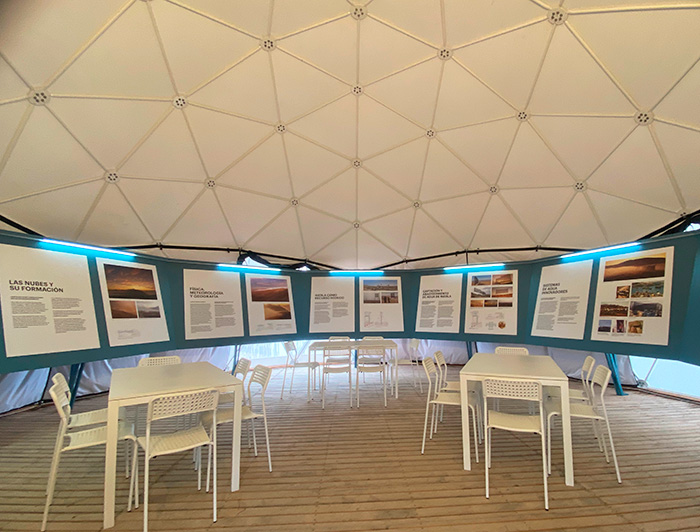
UC Chile President Ignacio Sánchez has underscored the importance of the Atacama Desert Research Station's growing presence, research capabilities, and community engagement. Inaugurating the new Interpretive Center during a ceremony he highlighted the importance of providing a dedicated space to welcome and connect with the community.
"The Living Desert project is about spreading science, valuing water collection through fog catchers, showing what we do to students and youth, but also to the neighborhood councils; establishing links with the community of Alto Hospicio, Iquique, and the different areas of the region. The initiative serves a dual purpose: first, to disseminate the university's knowledge, and second, to express gratitude to the community for facilitating this research space and fostering scientific creation. It reflects the community's dedication, enabling the university to engage with and serve the communities it values actively."
President Sánchez also acknowledged Pilar Cereceda, a distinguished professor and recipient of the 2019 National Prize from the Chilean Society of Geographic Sciences. Her remarkable contributions extend to fog research, the Atacama Desert Research Station, the UC Chile Atacama Desert Center, and her pivotal role in community engagement as a valuable member of the Living Desert team.
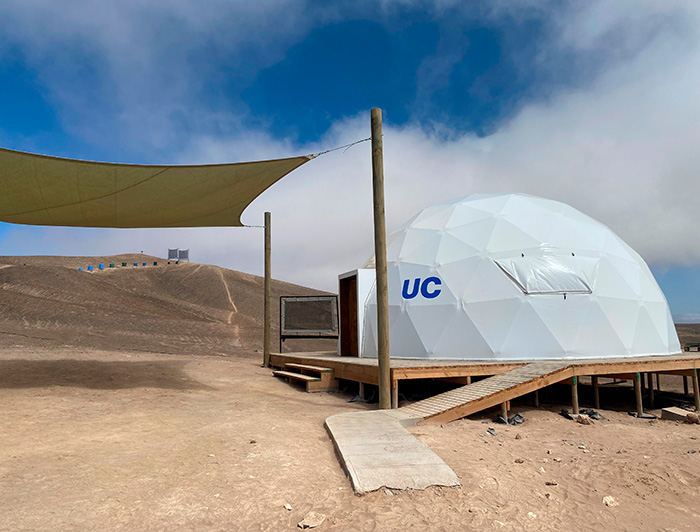
Meanwhile, Valeria Palanza, the Dean of the Faculty of History, Geography, and Political Science, stated: "The Atacama Desert Research Station brings us immense joy due to the extensive research and its positive impact on the community. The university has been a part of this region for decades, and through the scientific research conducted here, we can now share knowledge with neighboring communities, establish connections, and inaugurate a project that holds great significance to us: Living Desert. This will allow us, through the Interpretive Center, to receive students and people from the community so that they can be exposed to the knowledge that is generated here."
According to Pablo Brugnoli, head of the Science and Society division of the Ministry of Science, Technology, Knowledge and Innovation, the challenge is to bring science closer to the people, so that every day more people commit to scientific development from their respective fields of action, with territorial relevance. "The Living Desert Interpretive Center fulfills all the purposes of the program because it has made a very valuable contribution with the communities of Alto Hospicio, working together to create the content we see," he said.
The inauguration, led by President Ignacio Sánchez and attended by Dean Valeria Palanza, Living Desert Project Director and Coordinator Pablo Osses, and Virginia Carter, had representation from UC including the Vice President of Academic Affairs Fernando Purcell; Loreto Valenzuela, Dean of Engineering; María Angélica Fellenberg, Dean of Agronomy and Natural Systems; Johannes Rehner, Director of the Institute of Geography; Claudio Rolle Director of the Institute of History and; Umut Aydin, Director of the Institute of Political Science; Camilo del Río, Director of the UC Chile Atacama Desert Center; María Elena Boisier, Director of Research; and Maryon Urbina; Director of Sustainability. Also in attendance were professors, professionals, students, and members of the Living Desert team. Representatives of public institutions, NGOs, local organizations, and members of neighboring communities also participated.
A Public Space for the Region
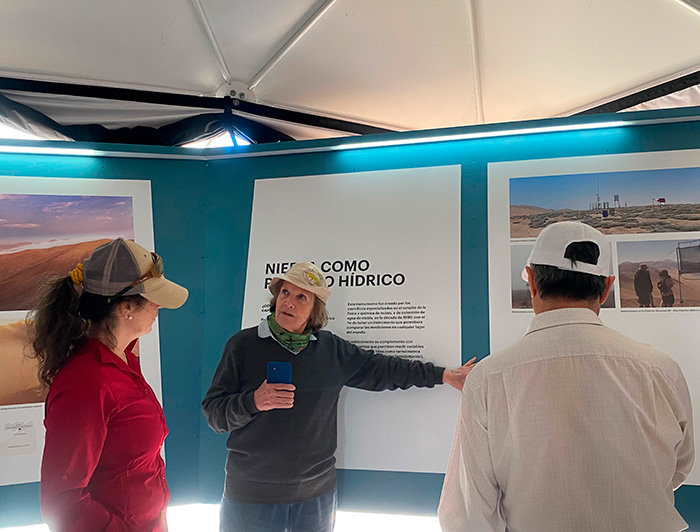
"This public space, focusing on the desert, water, and fog water for the Tarapacá region, holds significant importance. Serving as a gathering place for students in the desert, it propels university research forward and promotes collaboration between the university and regional stakeholders. The purpose of this project is to bring together in one place the capabilities and possibilities to teach, practice, and make empirical tests," said Pablo Osses, professor at the Institute of Geography, director of the Atacama Desert Research Station, and of the Living Desert project.
"This is a project built together with the local communities and is made available to them," said Living Desert coordinator and UC Geography Institute professor Virginia Carter. "We have worked closely with the residents, particularly engaging with communities in Alto Hospicio, such as the neighborhood council El Despertar de El Boro and Parque Urbano Santa Rosa," she emphasized, noting that the new facility will be accessible to the community through guided tours.
Mauricio Grandjean, administrator of the Santa Rosa de Alto Hospicio Urban Park highlighted the significance of community involvement in the project, expressing that the execution of this work demonstrates a commitment to the community and the environment through technological innovation.
University Efforts

The new Interpretive Center is the result of a joint effort, not only between the team and the community but also with the participation of UC Chile professors, undergraduate and graduate students, professionals, and alumni.
The design and execution of the "Desertario" museography project, an interpretative center, were overseen by School of Architecture professors Pedro Alonso, Javier Ruiz-Tagle, and Guillermo Zilleruelo, with the collaboration of Santiago Eguiguren, a recent UC Chile architecture graduate. Additionally, the graphic design of the panels and infographics was handled by School of Design professor Patricio Pozo.
On the other hand, the electrical energy comes from a system of solar panels, installed by Rodrigo Escobar, professor at the School of Engineering, together with Armando Castillejo, postdoc, and engineer José Ortega, all from the Department of Mechanical and Metallurgical Engineering.
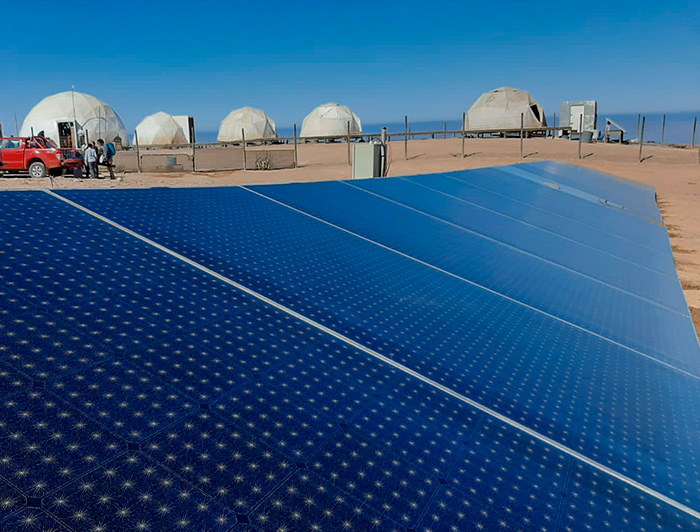
The Atacama Desert Research Station is precisely the outcome of an interdisciplinary approach coming together. One example lies just a few steps from the Interpretive Center: the new greenhouse spearheaded by Francisco Albornoz, professor at the Faculty of Agricultural and Natural Systems, together with agronomist Inés Vilches. They have successfully cultivated lettuce and strawberries of considerable size and excellent taste using hydroponic agriculture, harnessing fog water and solar energy.
And moving along the road we came across the Fondart project "Deserta X", led by Professor Pedro Alonso. Currently under construction, it is a prototype for a Minimum Survival Habitation Module designed for extreme climates. This innovative structure allows one or two people to live there experimentally for an extended period, utilizing fog water and solar energy.
This project showcases the passion, perseverance, and public engagement of researchers, students, and the entire university community. Their collective efforts create synergies, contributing to the application of knowledge and innovation in service to the community. This commitment aligns seamlessly with the specific goal of the Living Desert project: to increase the availability of clean, low-cost, and sustainably produced water for both human consumption and the productive development of the region's communities.
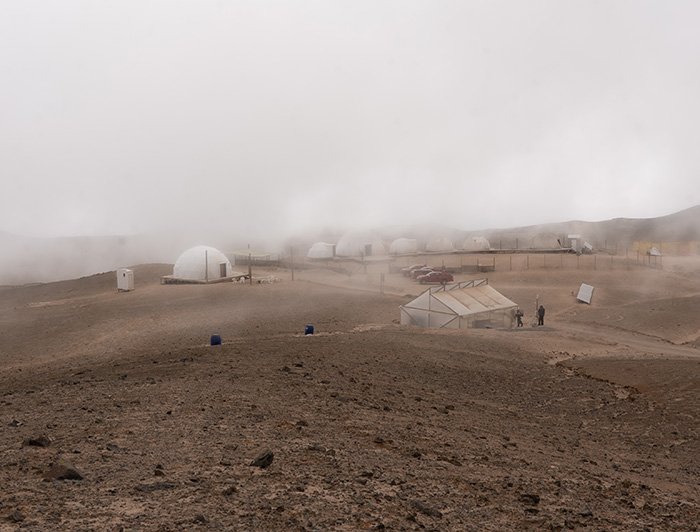
The Living Desert project is integrated by:
- Director: Pablo Osses, Professor at the Institute of Geography and Director of the Atacama Desert Research Station
- General Coordinator: Virginia Carter, Professor at the Institute of Geography
- Content Manager: Pilar Cereceda, Associate Professor Institute of Geography
- Creative Manager: Camilo del Río, Professor at the Institute of Geography and Director UC Chile Atacama Desert Center
- Design and Editing: Pedro Alonso, Professor at the School of Architecture
- Communications Coordinator: Nicole Saffie, Web Editor Home UC, Digital Administration, Office of the Provost
- Facilitator: Constanza Vargas, PhD Student at the Institute of Geography, Atacama Desert Research Station


